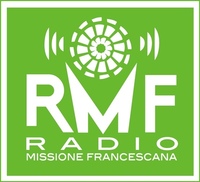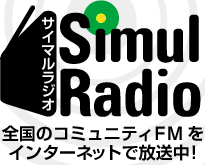POINT LACE INSTRUCTIONS
The materials required for this elegant branch of needlework are neither numerous nor expensive. TRACING CLOTH, LEATHER, or TOILE CIRÉE, various BRAIDS and CORDS, LINEN THREAD and two or three sizes of needles, scissors and thimble. TRACING CLOTH is required when ladies copy point lace patterns, and is the most convenient mode of taking them, as the design can be worked upon the tracing cloth, which, though transparent, is very strong; the price is 1s. 6d. per yard. Fine LEATHER is the material upon which bought patterns are usually traced, and is decidedly more pleasant to work on than is any other material. In selecting [452] patterns ladies should choose those traced upon green leather in preference to scarlet or buff, as green is better for the eyesight than any other colour.

TOILE CIRÉE is only a substitute for leather, and is not as pleasant to work upon in warm weather.
The needles employed are usually Messrs. Walker's needles, Nos. 9 and 10. The scissors should be small, sharp, and pointed, as in illustration No. 425. An ivory thimble may be safely employed in this light work.






The BRAIDS are of various widths and kinds. None but pure linen braid should be employed; those with machine-made edgings are eschewed by many lace-workers, the plain, loose-woven linen braid of various widths and qualities being alone acceptable to experienced hands.
But all ladies do not care to be at the trouble of edging the braid, and will find Nos. 426, 428, 430, and 431 very useful. No. 429 is a plain linen braid with a vandyked edge, which works out very prettily. No. 431 is an edged braid with open holes, in imitation of the point lace work of the fifteenth century.
[453]Point lace cords resemble the satin stitch embroidery in their close, regular smoothness; the price is 1s. per hank, and they are of various thicknesses, from the size of a coarse crochet thread up to that of a thick piping cord. These cords are used to ornament the braid, and are closely sewn on the braid, following its every outline, and serve as beading to the edging, being always sewn on the outer edge alone. The finer kinds of this cord are used in place of braid where very light work is needed, as in the point lace alphabet which forms the frontispiece of this work. Directions for laying on the cord when employed as braid are given on page 500. When used as a finish only, and to impart the raised appearance of Venice and Spanish lace, it is fixed on the braid by plain, close sewing. The thread used should be Mecklenburg linen thread; that of Messrs. Walter Evans and Co. we strongly recommend as being of pure linen, washing and wearing well; it is pleasant to work with, from the regularity and evenness of the make. The numbers run thus:--2, 4, 6, 8, 10, 12, 14, 16, 18, 20, 24, 30, 36, and 40--and will be found adapted for every kind of lace stitch. No. 2 is the coarsest, No. 40 the finest, size.
In working point lace the following directions must be attended to: Begin at the left hand, and work from left to right, when not otherwise directed, as in reverse rows. Before cutting off the braid run a few stitches across it to prevent it widening. Joins should be avoided, but when a join is indispensable, stitch the braid together, open and turn back the ends, and stitch each portion down separately. When passing the thread from one part to another, run along the centre of the braid, allowing the stitches to show as little as possible. In commencing, make a few stitches, leaving the end of the thread on the wrong side and [454] cutting it off afterwards. In fastening off, make a tight button-hole stitch, run on three stitches, bring the needle out at the back, and cut off.
Having now completed our list of materials, we can proceed to lay on the braid.

TO PLACE THE BRAID.--No. 442 shows the design traced upon paper or tracing cloth, and lightly tacked to a foundation of leather or toile cirée. Run on a straight line of braid for the lower edge, with fine stitches, working as shown from left to right. Take another piece of braid, or the other end of the same piece, and begin to lay the braid by "running" stitches in its centre, keeping it as smooth and even as possible. The outer edge presents no difficulty, but the inner edge will not lie evenly without being drawn in by a needle and thread, as follows:--Thread a No. 9 needle with No. 12 Mecklenburg thread about 20 inches long, fasten the thread to one point, and insert the needle in [455] and out of the edge of the braid, as if for fine gathering; this thread when drawn up will keep the braid in its place. Two or three fastening off stitches should be worked when each circle, half circle, or rounded curve of a pattern is finished, as the drawing or gathering thread remains in the work, and forms an important, though unseen, part of its structure.
As much of the beauty of point lace depends upon the manner of placing the braid, ladies cannot bestow too much pains upon this part of the work, which is a little troublesome to beginners. Many fancy shops now undertake this braid-placing for ladies, who can have their own pattern braided and commenced or braided alone at trifling expense. Among these may be mentioned the following houses:--
Goubaud, 30,
Henrietta-street,
Covent-garden.
Boutillier, Oxford-street, W.
The stitches used in point lace may be divided into--
STITCHES PROPER, or points.
CONNECTING BARS.
FINISHING EDGINGS.
WHEELS AND ROSETTES
The term point lace, or lace stitches (points), has of late been applied to every stitch executed with Mecklenburg thread, and many stitches are erroneously named by modern writers. As there are more than one hundred stitches employed in this beautiful art, much study and opportunity of seeing specimens of old point lace is required to give a novice any idea of the various kinds of point lace; but by attention to the following stitches the rudiments of the art may be easily acquired and very beautiful lace produced.
The first stitch is POINT DE BRUXELLES, or Brussels lace stitch. This stitch, as may be clearly seen in illustration No. 433, is a simple [456] button-hole stitch worked loosely and with great regularity. The whole beauty of Brussels lace depends upon the evenness of the stitches. This stitch is sometimes employed as an edging, but is more often worked in rows backwards and forwards, either as a groundwork or to fill spaces, as in the point lace collar, No. 496.


Brussels Point is the foundation of nearly all the lace stitches.
POINT DE VENISE (Venetian or Venice Point) is worked from left to right, [457] like Brussels point. Work one loose button-hole, and in this stitch work four button-hole stitches tightly drawn up, then work another loose button-hole stitch, then four more tight button-hole stitches in the loose one, repeat to the end of the row, and fasten off.


PETIT POINT DE VENISE (Little Venice Point) is worked in the same manner as Point de Venise, but one tight stitch only is worked in each loose button-hole stitch. This is a most useful stitch for filling small spaces.

No. 437.--POINT D'ESPAGNE (Spanish Point) is worked from left to right as follows:--Insert the needle in the edge of the braid, keeping the thread turned to the right, bringing it out inside the loop formed by [458] the thread (see illustration No. 437); the needle must pass from the back of the loop through it. Pass the needle under the stitch and bring it out in front, thus twice twisting the thread, which produces the cord-like appearance of this stitch. At the end of each row fasten to the braid and return by sewing back, inserting the needle once in every open stitch.

No. 438.--POINT D'ESPAGNE (Close) is worked in the same way as open point d'Espagne, but so closely as to only allow the needle to pass through in the next row. This stitch is also worked from left to right; fasten to the braid at the end of each row, and sew back to the left again.
No. 439.--TREBLE POINT D'ESPAGNE is worked in exactly the same way as the open and close point d'Espagne, as may be seen in illustration No. 439.
Three close stitches, one open, three close to the end of each row. Sew back, and in the next row begin one open, three close, one open, then close to the end; repeat the rows as far as necessary, taking care that [459] the close and open stitches follow in regular order. Diamonds, stars, and various patterns may be formed with this stitch.

No. 440.--POINT DE GRECQUE is begun from left to right, is worked backwards and forwards, and is begun by one stitch in loose point de Bruxelles and three of close point d'Espagne; then one Brussels, three point d'Espagne to the end of the row; in returning work back in the same manner.

No. 441. POINT DE VALENCIENNES (Valenciennes Stitch).--This stitch appears complicated, but is really easy to work. Begin at the left hand [460] and work six point de Bruxelles stitches at unequal distance, every alternate stitch being larger.
2nd row: Upon the first large or long stitch work 9 close button-hole stitches, then 1 short point de Bruxelles stitch under the one above, then 9 close stitches, and so on to the end of row (right to left).

3rd row: 5 close button-hole in the 9 of previous row, 1 short point de Bruxelles, 2 close in the Bruxelles stitch, 1 short point de Bruxelles, 5 close, 1 short point de Bruxelles, 2 close, l short, 5 close, 1 short, and repeat. 4th row: 5 close, 1 short point de Bruxelles, 2 close, 1 short, 5 close, 1 short, 2 close, l short, and repeat. Continue the rows until sufficient of the pattern is worked.

No. 442. POINT D'ALENÇON.--This stitch is used to fill up narrow spaces [461] where great lightness is required. Point d'Alençon is worked under and over in alternate stitches, like hem stitch. Nos. 442 and 443 show point d'Alençon. In No. 442 a twisted stitch is worked over the plain point d'Alençon, which is clearly shown in No. 443; this twist is made by passing the thread three times round each plain bar, and working the knot shown in illustration No. 442 over both strands of the bar.

The POINT D'ALENÇON No. 443 is a festoon of close button-hole stitch worked over the plain bars.

No. 444.--POINT D'ANGLETERRE (Open English Lace).--Open English Lace is thus worked:--Cover the space to be filled in with lines of thread about [462] one-eighth of an inch apart, then form cross lines, intersecting those already made and passing alternately under and over them; work a rosette on every spot where two lines cross, by working over and under the two lines about 16 times round, then twist the thread twice round the groundwork thread, and begin to form another rosette at the crossing threads. No. 445 shows this stitch much enlarged.

No. 446,--POINT TURQUE (Turkish Stitch).--This easy and effective stitch looks well for filling either large or small spaces; the thread employed should be varied in thickness according to the size of the space to be filled. 1st row: Work a loop, bringing the thread from right to left, [463] passing the needle through the twist and through the loop, draw up tight and repeat. 2nd row: 1 straight thread from right to left. 3rd row: Work the same as first using the straight thread in place of the braid, and passing the needle through the loop of previous row, as shown in illustration No. 446.

No. 447.--CORDOVA STITCH is useful for varying other stitches. It resembles the point de reprise of guipure d'art, and is worked in a similar manner over and under the side of squares formed by straight and parallel lines. (See No. 448.)

No. 448.--POINT DE REPRISE.--This stitch is worked by darning over and [464] under two threads, forming a triangle. The space is filled by parallel and crossway bars, placed at equal distances, and on the triangles thus produced point de reprise is worked.

No. 449.--POINT BRABANÇON (Brabançon Lace) is worked as follows:--Left to right. 1st row: 1 long loose, 1 short loose, point de Bruxelles alternately to end of row. 2nd row: 7 tight point de Bruxelles in the 1 long loose stitch, 2 short loose point de Bruxelles in the short loose stitch of previous row, repeat. 3rd row: Same as first.



No. 450 is used for groundwork where Brussels net is not imitated, and is very effective. It is begun in the corner or crosswise of the space to be filled. A loose point de Bruxelles stitch is first taken and fastened to the braid, then passed twice through the braid as shown in illustration, and worked in rows backwards and forwards as follows:--1 point de Bruxelles stitch; before proceeding to the next stitch pass the needle under the knot, over the thread, and again under it, as shown in illustration No. 450. This stitch is very quickly worked. No. [466] 451 shows point de fillet applied in filling a space, with a few stitches of point de reprise worked upon this pretty groundwork.
No. 452.--POINT DE TULLE.--This stitch is used as a groundwork for very fine work, and is worked in rows backwards and forwards in the same stitch as open point d'Espagne, page 457. When this is completed the work is gone over a second time, by inserting the needle under one twisted bar, bringing it out and inserting it at *, and bringing it out again at the dot. This produces a close double twist which is very effective.

No. 453.--MECHLIN LACE (Mechlin Wheels).--This is one of the prettiest stitches in point lace, but also one of the most difficult to work correctly. It is thus worked:--Work a number of diagonal bars in button-hole stitch on a single thread in one direction, then begin in the opposite side the same way, and work 5 or 6 stitches past the spot where the two lines cross, pass the thread round the cross twice under and over the thread to form a circle. Work in button-hole stitch half one quarter, make a dot by putting a fine pin in the loop instead of drawing the thread tight, and work 3 button-hole stitches in the loop [467] held open by the pin, then take it out, and continue as before. Beginners will do well to omit the dot, leaving the loop only on the wheel. Mechlin wheels are also worked in rows upon horizontal and parallel lines of thread.

No. 454.--ESCALIER LACE.--This useful lace may be varied in pattern to any extent by placing the open stitches in any desired order; it then takes the name of diamond or Antwerp lace, according to the design. True escalier lace is made by working nine button-hole stitches close together; then miss 3--that is, work none in the space that 3 stitches would occupy--work 9, miss 3 as before to the end of row, begin the 2nd row 3 stitches from the end, to cause the open spaces to fall in diagonal lines--a succession of steps or stairs (escalier), which gives name to this stitch.

No. 455.--SPANISH POINT LACE is adorned with highly-raised scrolls, flowers, &c. This is effected by working over an underlay of coarse white thread or over fine white linen cords. The wheels are worked by winding soft coarse linen thread round pencils or smooth knitting-pins of various sizes, and working over the circle thus obtained a succession of close button-hole stitches. These wheels are sewn on to the lace when completed. The groundwork of Spanish lace is usually worked in what are called Raleigh Bars (see page 447), but this lace has sometimes for groundwork point de Venise. An easy mode of working this handsome lace is to trace the design upon very fine good linen; raise the thick parts as above directed, and embroider the whole in fine thick scalloped button-hole stitch; fill the ground with Raleigh bars, or, as shown in illustration No. 455, in treble point de Venise, and cut away the linen from beneath the ground-work.

WHEELS AND ROSETTES.
Wheels or rosettes are used to fill up circles, or in combination to form lace. The simplest is--
THE SORRENTO WHEEL.--Nos. 456 and 457.--This is worked by fastening the thread in the pattern to be filled up by means of the letters. Fasten it first at the place a, then at the place b, carrying it back to the middle of the first formed bar by winding it round, fasten the cotton at the place c, carrying it back again to the centre by winding it round the bar, and so on; then work over and under the bars thus formed as in English lace. See illustrations Nos. 456 and 457 below.

No. 458.--ENGLISH WHEEL.--This is worked in the same manner as the Sorrento wheel, but instead of winding the thread over and under the bars, the needle is inserted under each bar and brought out again between the thread and the last stitch; this gives a kind of button-hole stitch, and gives the square, firm appearance possessed by this wheel.
[470]
No. 459.--ROSETTE IN POINT D'ANGLETERRE.--This rosette is worked in a somewhat similar manner to the wheel above described, the difference being that after each stitch passed round and under the bars, the thread is passed loosely round in the reverse direction, as shown in illustration No. 459, before proceeding to make the next stitch.

No. 460 is a rosette or star which is used to fill circles of braid, and forms the centre of many modern point lace patterns. It is worked upon [471] a pattern traced and pricked in small holes at equal distances. Two threads are employed, one coarse tracing thread, the other of finer thread. The coarse thread is laid on thus:--Pass the needle containing the fine thread, No. 12, through one of the pricked holes, over the tracing thread and back through the same hole; repeat, following the traced outline until the whole of the coarse thread is laid over the outline, then work over in tight button-hole stitch with picots or purls, as on the Raleigh bars (see page 477). This mode of laying on tracing or outlining thread is also applied to fine braid and to point lace cord, as in the alphabet No. 400 (see page 500).

BARS.
The word Bar is applied to the various stitches used to connect the various parts of point lace work, and the beauty of the work depends greatly upon the class of bar and its suitability to the lace stitches used. The simplest bar is--
[472]No. 461.--THE SORRENTO BAR.--It is worked from right to left, a straight thread being carried across and fastened with a stitch. The return row consists of a simple twist under and over the straight thread; three of these bars are usually placed close together at equal distances between each group. The thread is sewn over the braid in passing from one spot to another.


Sorrento bars are also applied as shown in illustration No. 462.
No. 463.--D ALENCON BARS are worked upon point de Bruxelles edging, and [473] are only applied to the inner part of a pattern, never being used as groundwork bars. The thread is merely passed three times over and under the point de Bruxelles stitches, the length of these bars being regulated by the space to be filled; when the third bar is completed a tight point de Bruxelles stitch is used to fasten off the bar, the thread is passed through the next point de Bruxelles stitch, and a second bar begun.


No. 464.--THE VENETIAN BAR is so simple that it hardly needs description. It is worked over two straight threads in reverse button-hole stitch.
[474]No. 465 shows the Venetian bar applied as the "veining" of leaf, and worked upon Sorrento bars.

No. 466.--VENETIAN BARS are worked so as to form squares, triangles, &c., in button-hole stitch upon a straight thread. The arrow in the illustration points to the direction for working the next.

No. 467.--BARS OF POINT D'ANGLETERRE.--These bars may be worked singly or to fill up a space, as in illustration. Work rosettes as in point d'Angleterre, page 461; when each rosette is finished [475]twist the thread up the foundation thread to the top, fasten with one stitch, then pass it under the parallel line running through the centre and over into the opposite braid; repeat on each side of each rosette, inserting the threads as in illustration.

No. 468.--POINT DE VENISE BARS (EDGED).--Begin at the right hand and stretch a line of thread to the left side of the braid, fastening it with one tight stitch of point de Bruxelles. Upon this line work a succession of tight point de Bruxelles stitches. In every third stitch work one point de Venise stitch.

No. 469.--We now come to the most important feature of BARS--the dot, picot, or purl, for by all these names it is known. This dot is worked in various ways upon different lace bars. Dotted point de Venise bars are worked as follow:--

Stretch the thread from right to left, on this work five tight stitches of point de Bruxelles, then insert a pin in this last stitch to hold it open and loose, pass the needle under the loose stitch and over the thread, as clearly shown in illustration No. 469, and in this loop work three tight point de Bruxelles stitches. Then work five more stitches, and repeat to end of row.

No. 470 shows a dot or picot upon a Sorrento bar worked between rows of [477] point de Bruxelles, three twisted stitches being worked into the loop left by the twisted thread; this forms a picot resembling satin stitch in appearance.
Nos. 471 and 472.--RALEIGH BARS are worked over a foundation or network of coarse thread, twisted in places so as to more easily fall into the desired form.


By following the numbering from No. 1 to 21, in No. 472, a square place may be easily filled, and portions of this arrangement applied to form groundwork of any shape desired. Upon this groundwork tight point de Bruxelles stitches are worked, and the dot worked upon these in one of the following ways:--
DOT or PICOT:--
1st Mode: Five tight point de Bruxelles stitches, one loose point de Bruxelles; pass the needle under the loop and over the [478] thread, as shown in point de Venise bars No. 469, draw up, leaving a small open loop as in tatting. Work five tight point de Bruxelles and repeat.
2nd Mode: Proceed as above, but instead of continuing the tight stitches work two or three tight stitches in the loop thus formed, and repeat.
3rd Mode: Work four tight point de Bruxelles stitches, one loose, through which pass the needle point, wind the thread three or four times round the point, as shown in illustration No. 473, press the thumb tightly on this, and draw the needle and thread through the twists. This is a quick mode of making the picot, and imitates most closely the real Spanish lace.
Illustration No. 473 also shows how this stitch may be applied as a regular groundwork, but the beauty of old point groundwork bars is the variety of form.
[479]
EDGES AND PURL FINISH.
The correct edging of lace is a most important part of this art, and care should be taken to work a proper edge for each kind of lace. Sorrento edging should be worked upon Limoges lace. Spanish lace requires a full rich edge, as shown in No. 478, &c. The simplest edge is point de Bruxelles, which is worked somewhat like the stitch No. 433, and is secured by a knot worked in the braid. Many lace-workers omit this knot.
[480]No. 475.--SORRENTO EDGING is worked with one short and one long stitch alternately.


No. 476.--POINT DE VENISE is worked precisely like that stitch (see page 456), three and even four stitches being worked in the loop.

No. 477.--POINT D'ANGLETERRE EDGING is worked in point de Bruxelles, the thread being again drawn through the braid before proceeding to the next stitch. This edging is strong and useful.

No. 478.--POINT D'ESPAGNE EDGING.--This stitch is easily worked. Insert [481] the point of the needle through the braid and wind the thread round it 20 times, draw the needle through these windings and draw the picot tight, sew over the braid the space of 3 stitches, and repeat.

No. 479.--ANTWERP EDGE.--This edge is only a variety of point d'Angleterre edging, and differs only in the mode of making the knot; the thread is passed over, under, and through the loop formed by the point de Bruxelles lace.

NOTE.--It will be observed that the stitches here given are much enlarged for the sake of clearness in showing details.






























































































































.jpg)








.jpg)















































.jpg)





































































































No comments:
Post a Comment